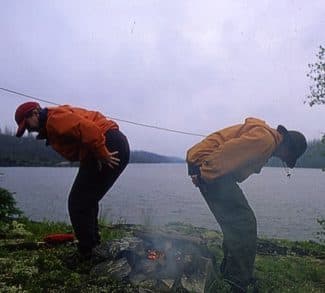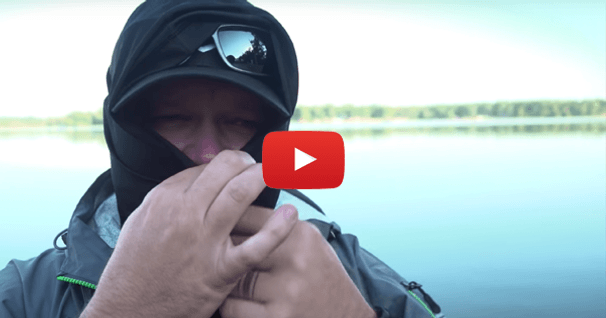It's In The Bag
There's really no reason you can't go paddling in the off-season, whether it's just before freeze up or just after the thaw. Paddling in cold weather is quite doable as long as we all remember what our mothers once taught us - dress for the weather, sure, but also for the water.

As a general rule, dress for the water temperature (I'm talking wet suits and/or dry suits). You must assume you'll go over and immerse yourself, and dress accordingly.
So, what's cold? If you're cold sensitive, then it's quite reasonable to feel affects of the cold when the water temperatures are only 77 degrees Fahrenheit (25 degrees Celsius) but on average it takes temperatures below 60 degrees F (15 degrees C) to become life-threatening. That's not to say you can swim naked for hours on end in temperatures above 77 degrees F (25 degrees C) without being affected by the cold or die instantaneously of hypothermia the moment you plunge into water below 60 degrees F (15 degrees C). The severity of the situation directly after immersion in cold water has more to do with your "shock" value then hypothermia.
This is a key point made by the world's leading authority on cold water immersion, Dr. Gordon Giesbrecht (aka "Professor Popsicle"), director of the University of Manitoba's Laboratory for Exercise and Environmental Medicine. He's the "King of the Big Chill" and takes his job very seriously. "Professor Popsicle" has, for the goodness of science, lowered his body temperature below 95 degrees (the inception of hypothermia) over three-dozen times.
Giesbrecht's studies show that the idea of immediately getting hypothermic the moment you take the plunge in cold water is false. The initial danger here is that instant gasp of breath one takes, which will end up drowning you if you submerge, inhale and panic. If you don't panic, control your breathing, begin to slowly tread water or keep a hold of your boat, the "gasping" will subside within a minute or two. You will definitely go numb but the pain of the cold will lessen and you'll have about ten minutes before muscles react and the real cold sets in. You have that time to get back in your boat or head for shore. After that point you're mind may not be rational but your body has another hour before its reaches the critical point of being hypothermic.
Whether the danger lies in initially gasping for air or becoming hypothermic later on, it still means that if you dress proper for the weather then the hazards decrease dramatically. As a general rule, specific immersion wear is a must when water temperature and air temperature combined (in Fahrenheit) add up less than 100 degrees (37 Celsius). This is not to say, of course, that things like your experience, distance you are from shore, roughness of the conditions or if you're traveling solo should not be included into the equation. The point is to be safe and also comfortable, and with all the combinations of the following clothing, there's no reason to have both.
Kevin Callan is the author of 11 books including his latest "Wilderness Pleasures"and "The Happy Camper." A regular keynote speaker at major North American canoeing and camping expos for over 20 years, he has received three National Magazine Awards and four film awards, including top award at the prestigious Waterwalker Film Festival. Callan lives in Peterborough, Ontario, birthplace of the modern-day canoe.
Related Articles
This a follow up to a video I did where I talked about differences that you may find in dry and semi-dry…
Can you use a Greenland Paddle in a Recreational Kayak? I received this question recently from a…
Learn how to stay comfortable on the water when fishing in the cold. When you stay warm and…
Mention guns and canoe trips in the same breath and some folks are apt to go ballistic. Still, if you're…



